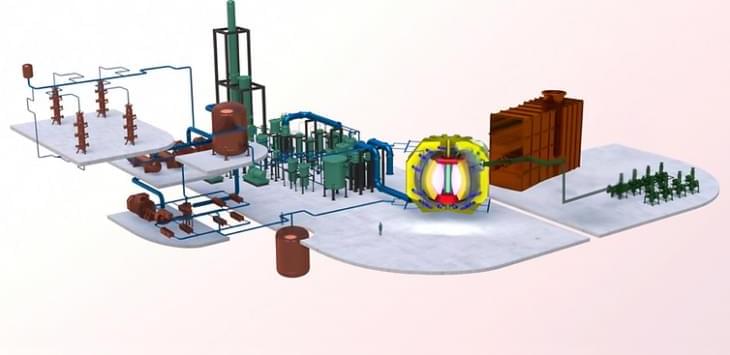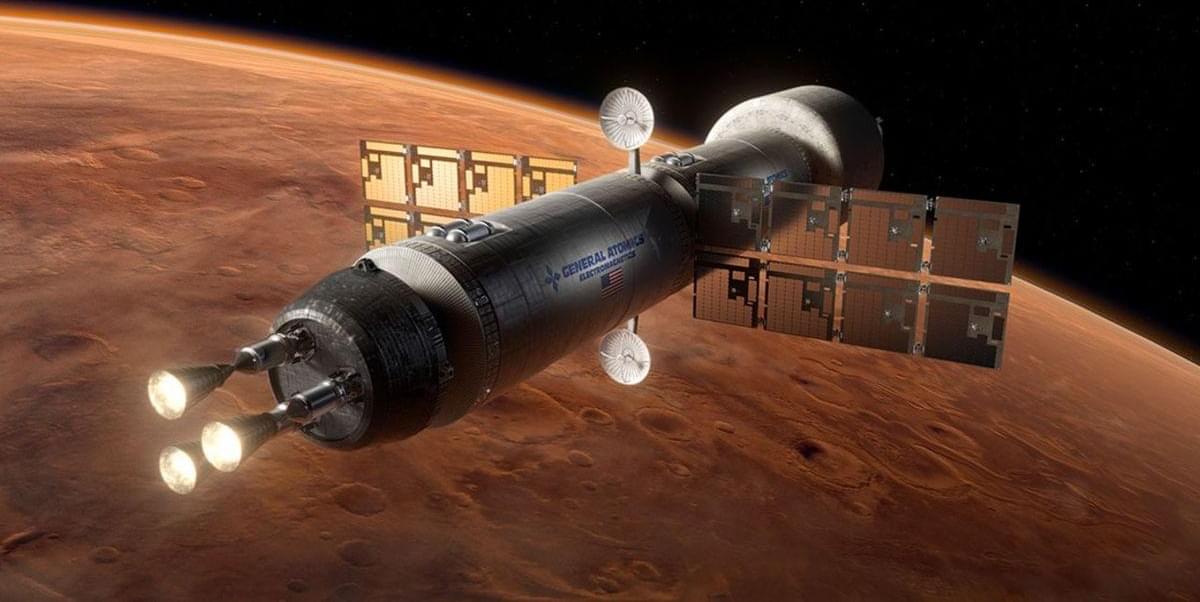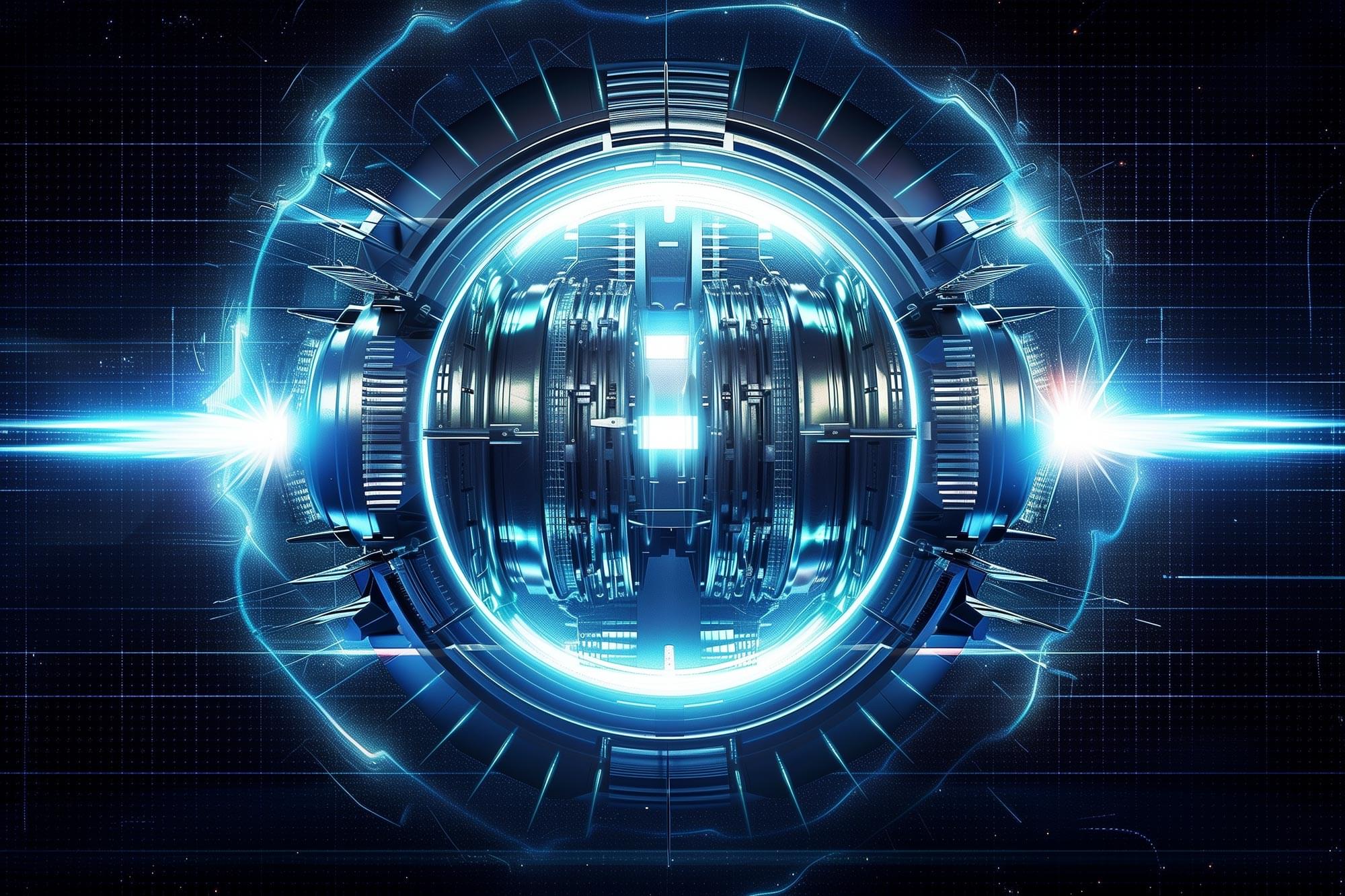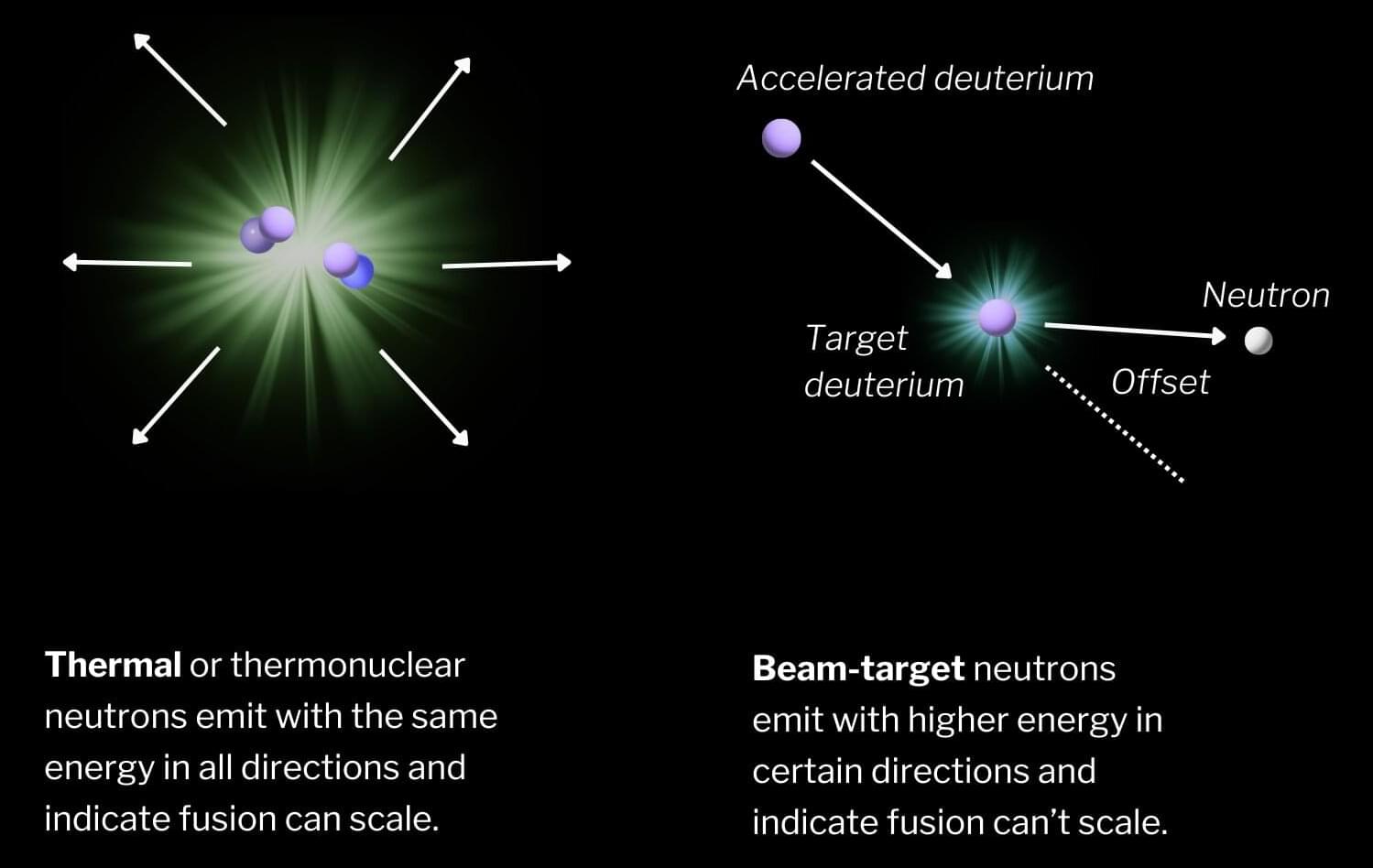The new material could be key to finally building a successful fusion reactor.


In December 2022, a team at Lawrence Livermore National Lab’s National Ignition Facility (NIF) conducted the first controlled fusion experiment in history to reach scientific energy breakeven, producing more energy from fusion than the laser energy used to drive it. In that experiment, where 2.05 MJ of laser energy was delivered to the target, a fusion energy output of 3.15 MJ was achieved, a gain of 1.5. Since then, ignition has been repeated several times, with even higher gains achieved. This webinar will review the NIF – the world’s largest, most energetic laser; the latest experimental results; the scientific and technological advancements that made this breakthrough possible; and the implications for future research, particularly in how the achievement of ignition now lays the groundwork to explore laser inertial fusion as a path for clean energy and energy security.
The following topics will be presented:
• Fusion.
• Lawrence Livermore National Laboratory.
• National Ignition Facility.
• Ignition.
• Energy.
• Pilot plant.
Visit us at https://hdiac.dtic.mil/.
#fusion #fusionenergy #energy#nuclearenergy #ignition #cleanenergy #energysecurity #energygeneration #alternativeenergy

The FAST (Fusion by Advanced Superconducting Tokamak) project has been launched in Japan with the aim of achieving fusion-based power generation by the end of the 2030s.
FAST, to be sited in Japan, aims to generate and sustain a plasma of deuterium-tritium (D-T) reactions, demonstrating an integrated fusion energy system that combines energy conversion including electricity generation and fuel technologies. The project will employ a tokamak configuration, chosen for its well-established data and scalability. The project brings together top researchers from prominent institutions, along with industrial and international partners from Japan, the UK, the USA and Canada.
Targeting a power generation demonstration by the end of the 2030s, FAST will address remaining technical challenges enroute to commercial fusion power plants. The FAST Project Office notes that power generation refers to producing energy from fusion reactions, but does not imply net positive power production where electricity output exceeds electricity consumption.
Audiobook🔉
📄A group of American researchers, isolated in their scientific station in Antarctica towards the end of winter, discover an alien spaceship buried in the ice, where it crashed twenty million years before. They try to thaw the inside of the spacecraft with a thermite charge but end up accidentally destroying it when the ship’s magnesium hull is ignited by the charge. They do recover an alien creature from the ancient ice, which the researchers believe was searching for heat when it was frozen. Thawing revives the alien, a being which can assume the appearance, memories, and personality of a living thing it devours, while maintaining its body mass for further reproduction. Unknown to them, the alien immediately kills and then imitates the crew’s physicist, a man named Connant; with some 90 pounds of its matter left over, it tries to become a sled dog. The crew discovers the dog-Thing and kills it midway through the transformation process. Pathologist Blair, who had lobbied for thawing the Thing, goes insane with paranoia and guilt, vowing to kill everyone at the base to save mankind; he is isolated within a locked cabin at their outpost. Connant is also isolated as a precaution, and a “rule-of-four” is initiated in which all personnel must remain under the close scrutiny of three others.
The crew realizes that they must isolate their base and therefore disable their airplanes and vehicles, yet they pretend that everything is normal during radio transmissions, to prevent any rescue attempts. The researchers try to figure out who may have been replaced by the alien (simply referred to as the Thing), to destroy the imitations before they can escape and take over the world. The task is found to be almost impossibly difficult when they realize that the Thing is shapeshifting and telepathic, reading minds and projecting thoughts. A sled dog is conditioned by human blood injections (from Copper and Garry) to provide a human-immunity serum test, as in rabbits. The initial test of Connant is inconclusive, as they realize that the test animal received both human and alien blood, meaning that either Doctor Copper or expedition Commander Garry is an alien. Assistant commander McReady takes over and deduces that all the other animals at the station, save the test dog, have already become imitations; all are killed by electrocution and their corpses burned.
Everyone suspects each other by now but must stay together for safety, deciding who will take turns sleeping and standing watch. Tensions mount and some men begin to go mad, thinking that they are already the last human, or wondering if they could know if they were not human any longer. Ultimately, Kinner, the cook, is murdered and accidentally revealed to be a Thing. McReady realizes that even small pieces of the creature will behave as independent organisms. He then uses this fact to test which men have been “converted” by taking blood samples from everyone and dipping a heated wire in the vial of blood. Each man’s blood is tested, one at a time, and the donor is immediately killed if his blood recoils from the wire. Fourteen men, including Connant and Garry, are revealed to be Things. The remaining men go to test the isolated Blair, and on the way, see the first albatross of the Antarctic spring flying overhead; they shoot the bird to prevent a Thing from infecting it and flying to civilization.
When they reach Blair’s cabin, they discover that he is a Thing. They realize that it has been left to its own devices for a week, coming and going as it pleased, as it is able to squeeze under doors by transforming itself. With the creatures inside the base destroyed, McReady and two others enter the cabin to kill the Thing that was once Blair. McReady forces it out into the snow and destroys it with a blowtorch. Afterwards, the trio discover that the Thing was dangerously close to finishing the construction of a nuclear-powered anti-gravity device that would have allowed it to escape to the outside world.
📍 Timestamps:
00:00 – Intro.
03:13 – Chapter 1
14:13 – Chapter 2
25:15 – Chapter 3
34:19 – Chapter 4
37:20 – Chapter 5
46:26 – Chapter 6
56:26 – Chapter 7
1:12:36 – Chapter 8
1:18:34 – Chapter 9
1:21:43 – Chapter 10
1:26:13 – Chapter 11
1:30:31 – Chapter 12
1:43:53 – Chapter 13
1:57:18 – Chapter 14

In today’s AI news, the OpenAI commercial, developed under new CMO Kate Rouch, deliberately avoids mentioning AGI or superintelligence, which are at the core of OpenAI’s mission. “We want the message to feel relevant to the audience that is watching the Super Bowl, which includes tens of millions of people who have no familiarity with AI,” Rouch said.
S $254-billion software industry by 45% over the next five years, according to a survey by consulting firm EY India. This boost will come through the dual effect of the IT industry integrating elements of GenAI and client projects move from concept to production. + Then, the French government plans Monday to pledge a gigawatt of nuclear power for a new artificial-intelligence computing project expected to cost tens of billions of dollars. France is making a bid to catch up in the artificial intelligence race by leaning on one of its strengths: plentiful nuclear power.
And, Canadian investment firm Brookfield plans to invest €20 billion by 2030 in artificial intelligence projects in France (around $20.7 billion at current exchange rates), according to a report from La Tribune Dimanche confirmed by news agency AFP. The majority of the sum will be used to build AI-focused data centers.
In videos, we join Adrian Locher, Merantix Capital, Wei Li, BlackRock, Scott Sandell, NEA, Rob Heyvaert, Motive Partners, and Guru Chahal, Lightspeed Venture Partners, discussing how to identify the next category-defining opportunities in AI across venture capital, private equity, and beyond?
Is what happens when millions of people get access to a transformational general purpose technology such as artificial intelligence, enabling superpowers that benefit both individuals and society.” + Then, check out the cutting-edge world of “hackbots”—AI agents designed to autonomously hack websites. Joseph Thacker, Principal AI Engineer at AppOmni as well as a security researcher who specializes in application security and AI, discusses the basics of hackbots, the current landscape of the technology, and its potential future implications.
S impact on cybersecurity roles, from automating tasks to creating new opportunities. + Thats all for today, but AI is moving fast — like, comment, and subscribe for more AI news! Please vote for me in the Entrepreneur of Impact Competition today! Thank you for supporting my partners and I — it’s how I keep Neural News Network free.
[](https://open.substack.com/pub/remunerationlabs/p/inside-open…are=false)


The study of ‘starquakes’ (like earthquakes, but in stars) promises to give us important new insights into the properties of neutron stars (the collapsed remnants of massive stars), according to new research led by the University of Bath in the UK.
Such explorations have the potential to challenge our current approaches to studying nuclear matter, with important impacts for the future of both nuclear physics and astronomy. Longer term, there may also be implications in the fields of health, security and energy.
The value of studying asteroseismology—as these vibrations and flares are known—has emerged from research carried out by an international team of physicists that includes Dr. David Tsang and Dr. Duncan Neill from the Department of Physics at Bath, along with colleagues from Texas A&M and the University of Ohio.

For decades, fusion researchers struggled with neutron isotropy, a key indicator of scalable plasma.
Plasma is one of the four fundamental states of matter, along with solid, liquid, and gas. It is an ionized gas consisting of positive ions and free electrons. It was first described by chemist Irving Langmuir in the 1920s.

In physics, the term “isotropy” means a system where the properties are the same in all directions. For fusion, neutron energy isotropy is an important measurement that analyzes the streams of neutrons coming from the device and how uniform they are. This is critical because so-called isotropic fusion plasmas suggest a stable, thermal plasma that can be scaled to higher fusion energy gains, whereas anisotropic plasmas, those emitting irregular neutron energies, can lead to a dead end.
A new Zap research paper, published in Nuclear Fusion, details neutron isotropy measurements from the FuZE device that provide the best validation yet that Zap’s sheared-flow-stabilized Z pinches generate stable, thermal fusion. It’s a benchmark milestone for scaling fusion to higher energy yields in Zap’s technology and giving confidence in reaching higher performance on the FuZE-Q device.
“Essentially, this measurement indicates that the plasma is in a thermodynamic equilibrium,” says Uri Shumlak, Zap’s Chief Scientist and Co-Founder. “That means we can double the size of the plasma and expect the same sort of equilibrium to exist.”

OpenAI on Thursday said the U.S. National Laboratories will be using its latest artificial intelligence models for scientific research and nuclear weapons security.
Under the agreement, up to 15,000 scientists working at the National Laboratories may be able to access OpenAI’s reasoning-focused o1 series. OpenAI will also work with Microsoft, its lead investor, to deploy one of its models on Venado, the supercomputer at Los Alamos National Laboratory, according to a release. Venado is powered by technology from Nvidia and Hewlett-Packard Enterprise.